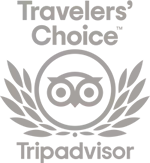La Torre Beach
the Two Souls of the Beach
The beach of Bucca ‘e strumpu ends at the beginning of La Torre, which can be called the “queen” of the beaches of Bari. The beach is divided into “Sa spiaggia de is feminas” to the right of La Torre and “Sa spiaggia de is mascus” to its left, names which date back to the post-war years, when the two beaches were frequented by men and women separately.
The northern part of La Torre is characterised by a bottom of coarse-grained sand of a slightly ochre colour, with a dense pine forest behind it. To the south of the tower, however, the beach takes on very different characteristics: the shoreline is made up of grey pebbles and thin sand and extends up to a small granite promontory which separates it from the beach of Sa Marina. The crystal-clear waters of this beach are characterised by a shallow seabed which slopes rapidly.
What characterises and dominates the landscape of this splendid beach is, needless to say, the Spanish tower. Built on an unspecified date following the edict of Philip II of Spain in 1580, it must certainly have already been erected and functioning by 1597, as the parish registers show that the alcalde of the tower witnessed a wedding on 20th February.
The beach
For the construction of the tower, granitic and basaltic rocks were used, which was the construction material available on site. Some scholars believe that this tower was intended to be built not on the bed of rocks on which it now stands, but further north, at Punta Niedda.
For once we are grateful to history that things did not turn out differently: rarely has man’s intervention on nature managed to instill charm and grandeur in a place which otherwise would have been simply beautiful.
Furthermore, the tower is also a place which has particular religious significance for the locals. During the festival of San Giovanni Battista, celebrated in July each year, the festival of “Su Nenniri” is also held, which are wheat sprouts contained in a vase of terracotta, decorated with ribbons, flowers and a cross of cane. The ritual of the festival dictates that, once the procession has taken place, the wheat sprouts are thrown into the sea at the foot of the tower.
How to get there
The beach is right in front of the Hotel La Torre.




